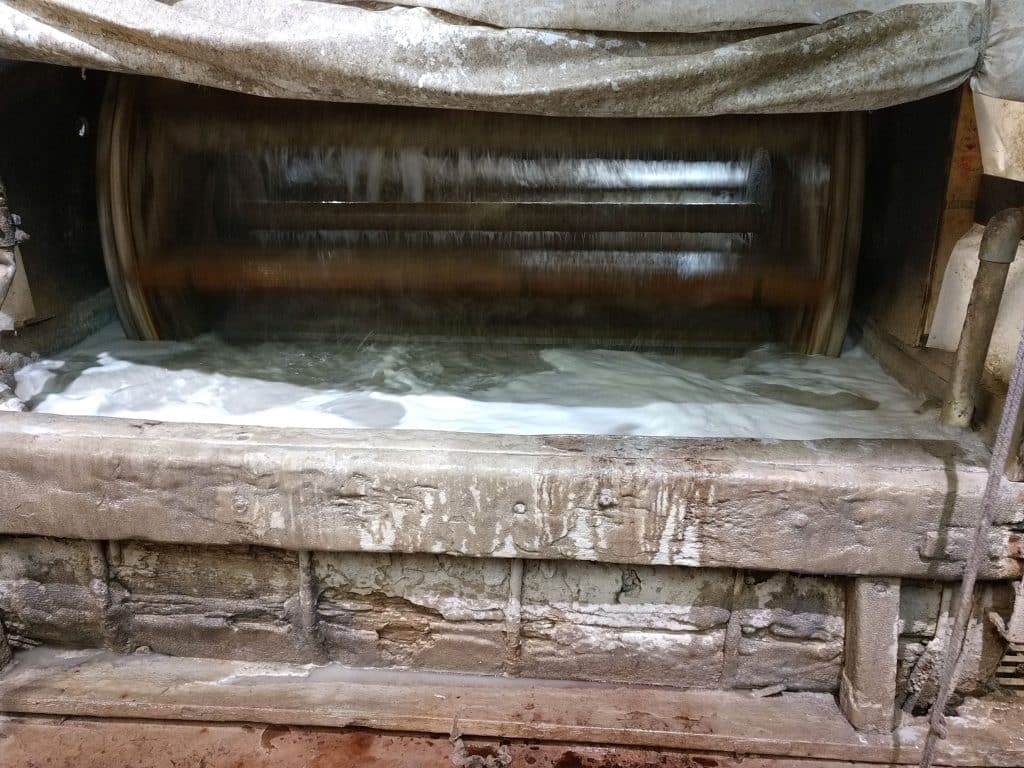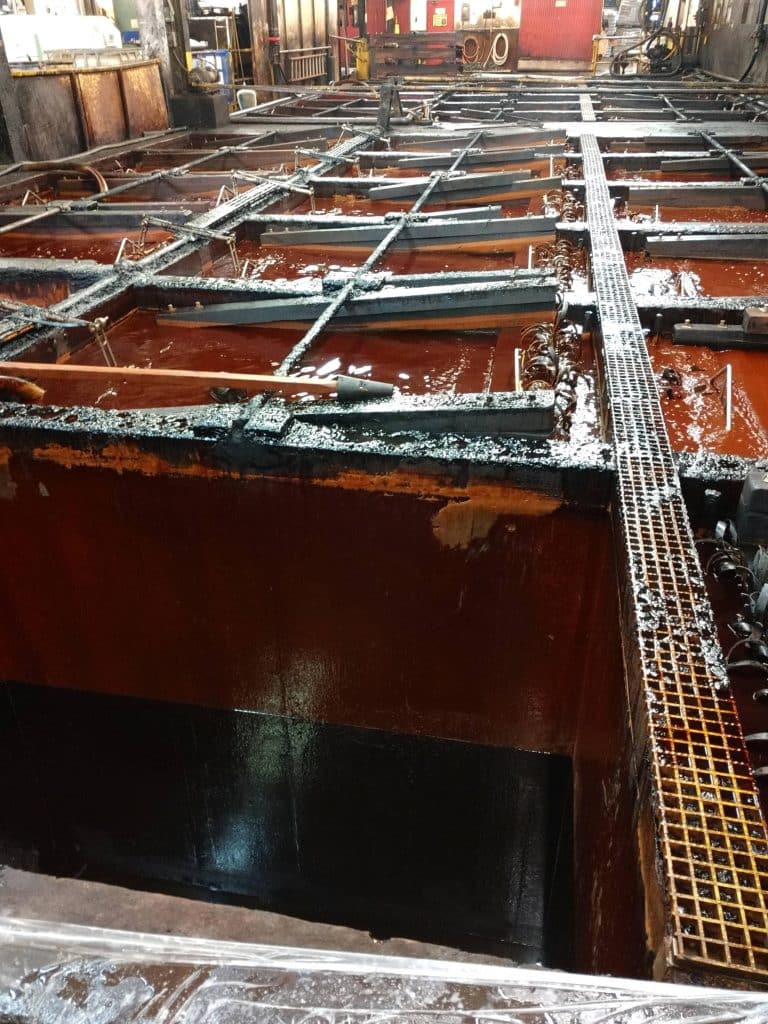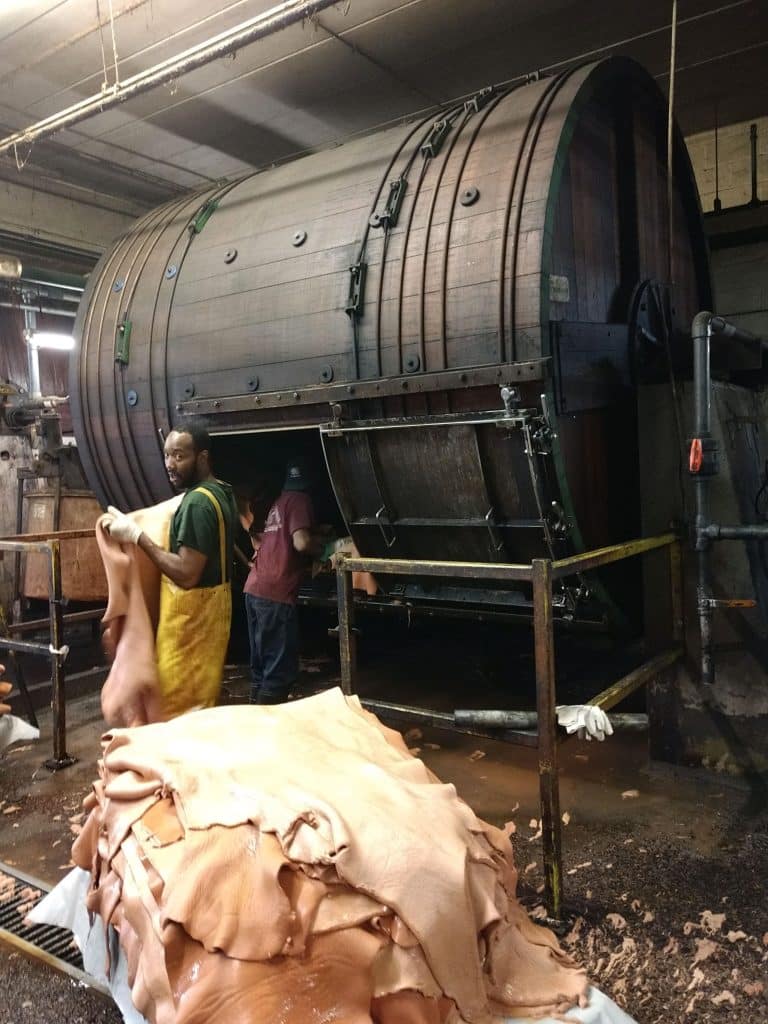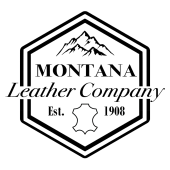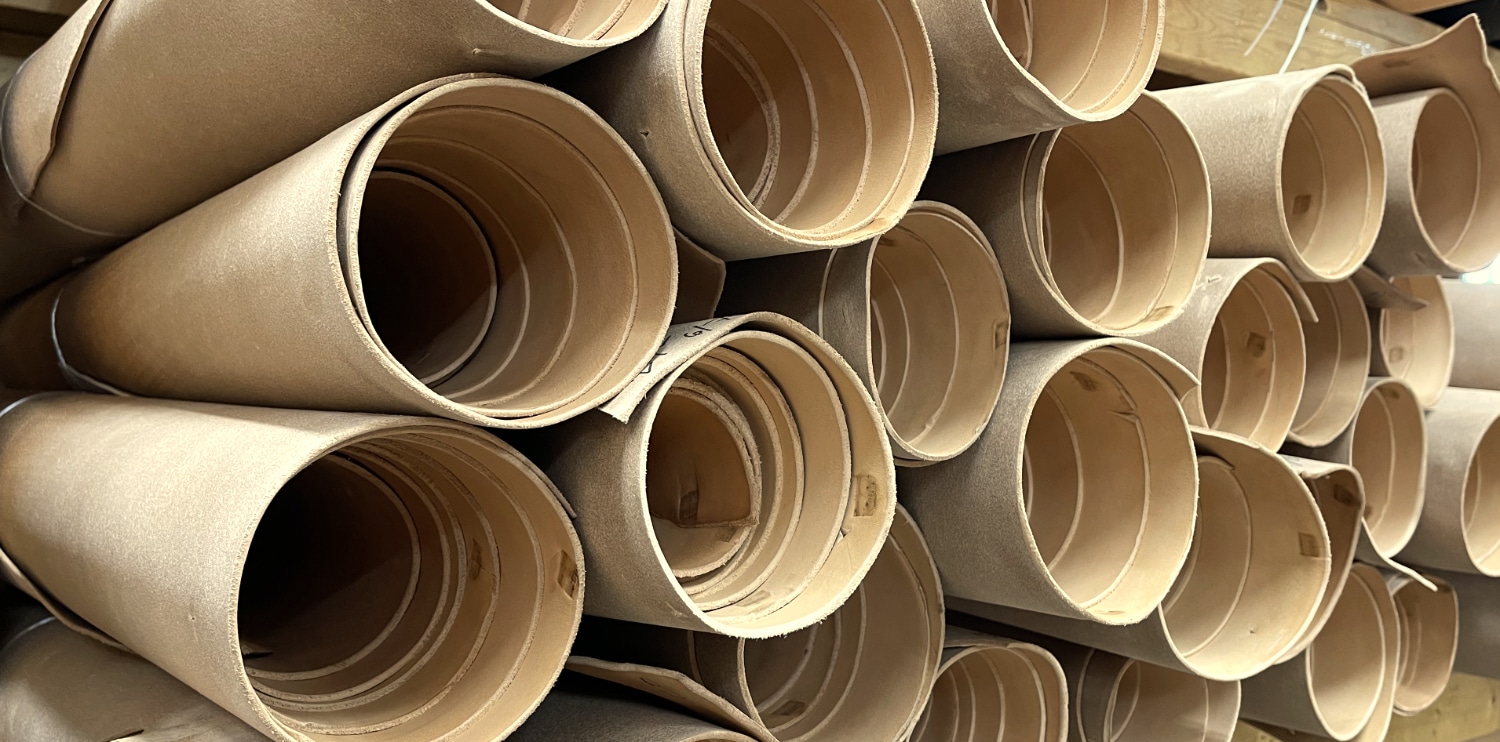
In 2019 my colleague Justin and I made a trip over to Missouri to pay a visit to Hermann Oak Leather to learn their tanning process so that we could incorporate it into conversations with our own customers. The trip was beyond worth it, not only because we learned so much more about vegetable tanned leather and were able to catch a St. Louis Cardinals game, but for the connections we made with all the amazing people that work for Hermann Oak, who collectively make the tannery something truly special. My goal in this article, however, is to help spread the knowledge that Justin and I gained after our trip, and to pass it along to you. Enjoy!
Founded in 1881, Hermann Oak Leather has been around even longer than Montana Leather Company, which wasn’t founded until 27 years later in 1908. The recipe that Hermann Oak follows today remains virtually unchanged from their days in the 19th century, something that Shep Hermann, the fourth generation owner, will proudly tell anyone who asks.
Hermann Oak uses a process called vegetable tanning, which is the oldest form of leather tanning there is. The chemistry that is involved to convert cow hide into usable leather is complex, and the highly detailed process that Hermann Oak uses has evolved from its ancient roots into something finely tuned through centuries of trial and error. Unlike chromium tanning, vegetable tanning allows the leather to remain firm and moldable, which are essential qualities to a wide array of leather goods, from belts and wallets to holsters and saddles. While vegetable tanning once took up to a year to complete, Hermann Oak and other modern tanneries can now accomplish it in 1-2 months.
The process begins with the meat packing plants, where the hides (not to be called leather quite yet) are washed, any excess fat is removed, and water content is reduced by soaking the hides in a salt solution. Once the hides arrive at Hermann Oak, they are sorted according to characteristics such as sex, weight, and/or whether or not they have brands. The heavier, non-branded steers are what are preferred by tanneries across the world, and they’re what everybody is after, however they only make up 1% of available cowhides in the US.
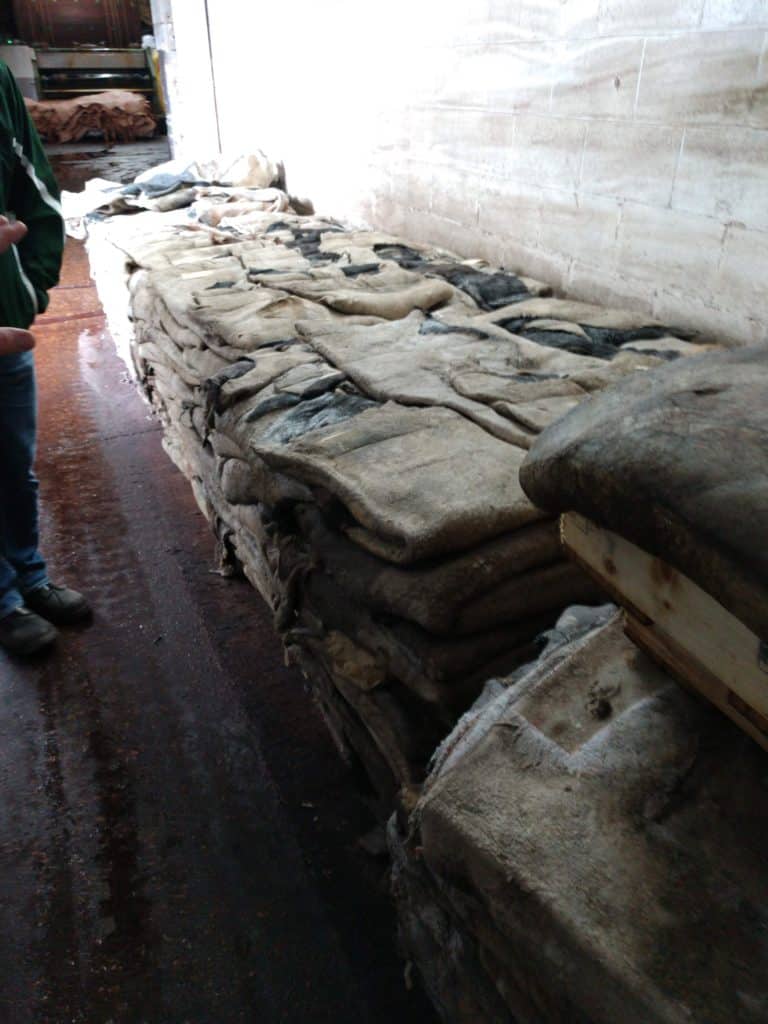
After sorting, Hermann Oak will reconstitute the hides with water by displacing the salt that was put into them. The hair is then removed with calcium hydroxide (lime) and sodium sulfide. The lime not only helps remove the hair, but primes the hide fibers by making them swell and become more receptive to the tanning process. Throughout this step and many other steps further down the line, temperature and pH are closely monitored for quality control and consistency. The hides are then fleshed once more to remove any excess fat or fibers.
Next, hides are leveled through a splitter, making the thickness more level throughout. This process is sometimes repeated later in the process or after the drying stage as well. The hides are then de-limed, which reduces the alkalinity (lowers the pH) back to neutral. After that, an enzyme is introduced, known as bating, to clean the leather and ready it for the actual tanning process. If this sounds like a lot so far, it’s because it is! Hermann Oak works very hard to make sure that we have some of the best leather available, and this process is why.
The “Veg Tan” Part
The hides are then placed inside vats filled with the main tanning solution that is produced from tree bark, specifically from quebracho trees in Argentina and wattle in Africa. This is how vegetable tanning gets its name. “How is bark from trees used?” you might ask. Well, the tannins are extracted by soaking the bark in hot water. Then the tincture is dried to make it into a powder that is then eventually used as an ingredient in the tanning solution. The tannins, like everything else at Hermann Oak, undergo rigorous testing to make sure nothing unexpected occurs during tanning. Soaking in the vats is the longest process in vegetable tanning leather, and can take up to 6 weeks. Everyday, workers will check on the temperature, acidity and tannin content to make sure the leather is tanned exactly the way they intend it. This process in particular struck me as something like a scene from Willy Wonka and the Chocolate Factory, with the chocolate milk looking tanning solution being stirred back and forth, and busy workers seemingly making arbitrary, but very diligent, checks to ensure the highest quality product that the rest of us mortals will never fully understand.
After the process in the vats is completed, the hides have now officially become what we call “leather.” The final step with chemicals takes place in a drum where the leather hides are cleaned, bleached, dyed if necessary (drum dyed leather is the best, as it is usually struck through all the way), and conditioned with fats. After finishing their time in the drum, the leather has as much moisture rung out as possible by placing it in a press between two rollers. The hides are then smoothed out in a setting machine, which also helps to reduce stretch (something that any experienced veg tan leather worker has had trouble with).
The veg tan leather is then placed in humidity and temperature controlled rooms and allowed to dry, which can take up to 3 days. Throughout this process, even though it is undesired in the end, water is an essential resource. Hermann Oak and other large tanneries go through as much as 100,000 gallons or more of water per day! And any water that is used must be treated thoroughly before it is put back into its source, which in the case of Hermann Oak is the Mississippi River.
Once dry, the leather is again trimmed to remove any unwanted or unusable parts, which tend to usually be in the neck or belly areas. Additionally, the leather is put through the press again to further smooth it out. At this stage, embossing is done to apply any textures or patterns that are desired as well.
Grading
Hermann Oak will then grade and sort their leather for a second time, based on a wider set of characteristics or defects. Defects can include anything that actually cuts into the grain or flesh, such as open scratches, holes, brands, open insect bites, warts, sores, tannery damage and butcher cuts. Defects that are generally not considered, as long as they are within reason, are healed scratches and insect bites, stretch marks and wrinkles, and minor discoloration. A grades will have the fewest imperfections, with the best areas (the butt, and secondly the shoulder) being considered the most during grading. B grades will have a few more defects, but still be largely clean in the those prime areas. C grades and D grades, or midgrades as we at Montana Leather Company call them, are going to have a few more imperfections in those prime areas, generally speaking. Figuring out what works best for you is part of the process of leather crafting, and we encourage you to try all grades once or twice to make an informed opinion.
Hermann Oak and some of its employees have an anecdote where several saddle makers were put into the same room to express their opinion on sides of their veg tan leathers. Where one saddle maker would say, “My goodness, who would ever want to buy that side of leather?” another saddle maker would say, “That will work just fine for me, thanks!” And of course, the reverse would happen when presented with other sides, with the point being that a perfect side of leather doesn’t exist, and the opinion of one person will be different from another’s. Additionally, Montana Leather Company, and any Hermann Oak vendor for that matter, has no say in the grading of Hermann Oak leather, as that is all done at the tannery.
Hermann Oak will then apply any finishing processes that are needed on a case by case basis, such as dry splitting to a desired thickness, spraying on dyes and pigments, and other special applications that a customer asks for. And finally, before shipment to its customers, Hermann Oak will grade their sides for a third time to ensure the leather will fit the needs of that customer. The sides are then sent through a machine to measure and stamp the square footage, along with the grade. In case you didn’t know, Hermann Oak sides will have 1-4 bars next to the square footage, with 1 bar corresponding to an A grade, and 4 bars corresponding to a D grade.
In conclusion, we can’t thank Hermann Oak enough for all that they do for us, and for the opportunity to explore and learn from their tannery. Justin and I witnessed first hand why the leather that comes out of Hermann Oak is regarded by many to be the very best on the market. And we at Montana Leather Company are proud to supply their leather so that everyone, from world renowned saddle makers to the casual hobbyist, can experience the joy of carving and stamping their leather.

